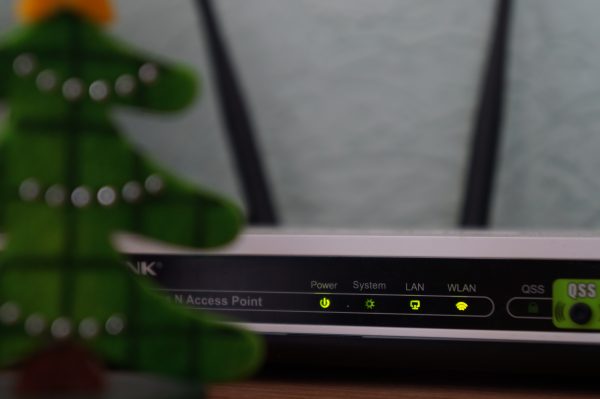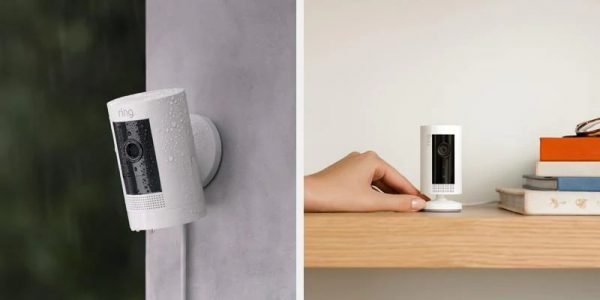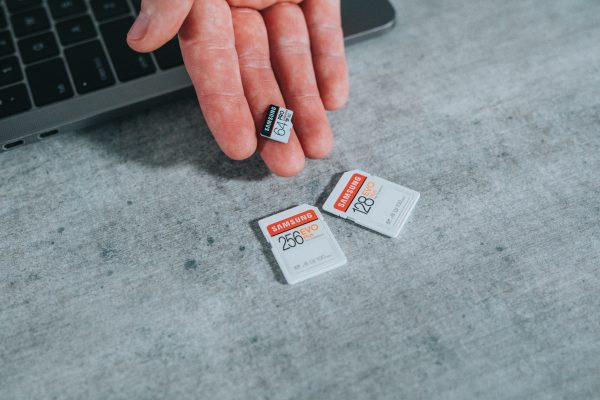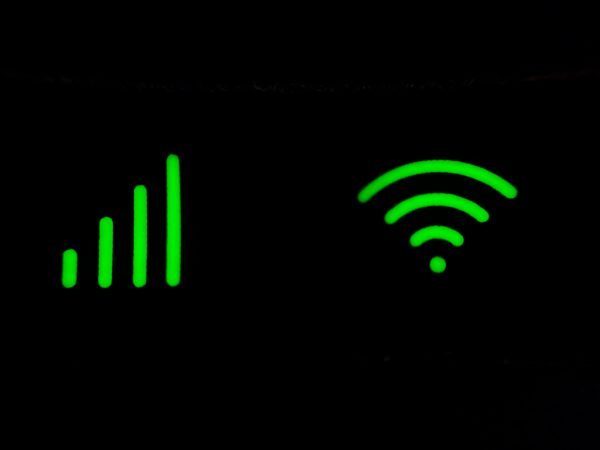Ring security cameras are one of the best in the business. And just like most smart devices, they rely heavily on a WiFi connection to work. But what happens when there’s a power or network outage? Do Ring cameras still work without WiFi? We answer that and more questions in this guide.
Also read: Best Hidden Camera Detectors to Secure Your Privacy
Inside This Article
- What Is a Ring Camera?
- Do Ring Cameras Work Without WiFi?
- How Do Ring Cameras Work?
- What Will Happen If Ring Cameras Lose WiFi or Internet?
- Can Ring Cameras Use SD Cards to Record?
- Can Ring Cameras Use Cellular?
- Does Ring Require a Subscription?
What Is a Ring Camera?
Ring is a smart home and security brand that’s probably most well-known for their video doorbells. But other than those, the company has a line of security cameras that are motion-activated and easy to install. These cameras are connected to your WiFi and compatible with Alexa. On top of that, they allow you to view the goings-on in your home wherever you are in 1080p with HDR.
Currently, these are the Ring cameras that you can buy right now:
| Model | Features | Price | Link to Purchase |
| Indoor Cam |
|
59.99 USD | Buy on Amazon |
| Stick Up Cam Plug-In |
|
99.99 USD | Buy on Amazon |
| Spotlight Cam Battery |
|
199.99 USD | Buy on Amazon |
| Floodlight Cam Wired Pro |
|
249.99 USD | Buy on Amazon |
All of these Ring cameras allow you to see, hear, and contact people at home through your phone, tablet, PC, or Amazon Echo device. All you need to do is download the Ring App, from either the Google Play Store or the Apple App Store. If you don’t have the app, you can just head over to the Ring website on your web browser, and log in. Plus, you can also get all Ring camera models in 2-pack, 3-pack, and 4-pack, so it’s easy to cover all bases of your home.
Do Ring Cameras Work Without WiFi?

Unfortunately, no — Ring cameras do not work without WiFi. You need to connect your home’s Ring camera to a WiFi network so that you can view its livestream anywhere through your phone or tablet. Plus, a WiFi connection is also needed for recording and storing videos in the cloud and for two-way talk and audio to work. Without it, your Ring camera can still be switched on, but it won’t be able to serve its purpose.
That said, there are a couple of things you need to keep in mind when connecting your Ring cameras to WiFi. First, these cameras are only compatible with 2.4 GHz WiFi networks; they won’t connect to a network that uses a 5 GHz band. But since many (if not most) WiFi routers offer both frequencies, you can just check your router’s admin panel to make sure that it’s set to 2.4 GHz and not 5 GHz.
Also, your WiFi connection needs to have stable upload and download speeds of at least 2 Mbps per camera if you want the best video and audio quality. To check your network’s speed, stand beside or near your Ring camera with your phone, tablet, or PC in hand. Then, head over to speedtest.net, hit the “GO” button, and wait for the site to complete the speed test. If your Internet’s speed meets Ring’s recommended speed, then you’re good to go. But if it doesn’t, don’t fret. After checking this primer on whether Ring cameras work without WiFi or not, see our tips on how to increase your Internet speed.
How Do Ring Cameras Work?

Although Ring cameras do not work without WiFi, they are very easy to use. Once you’ve installed one either inside or outside your home and connected it to your home WiFi network, you can start recording videos with it right away. To watch security videos of your home in real-time, you’ll need to either download the Ring App or log in to the Ring website. Of course, the device you’re watching the livestream on will also need to be connected to the Internet. Ring cameras make use of cloud storage, which means you can access previously recorded security footage through the app and the website as well.
Besides recording security videos and letting you view them in real-time, Ring cameras have motion sensors. As such, they can detect when someone is entering your property and alert you of any break-ins and other incidents. On top of that, all Ring cameras have color night vision, so you can easily check what’s going on at home even when there aren’t any lights on.
As we’ve mentioned, Ring cameras also feature two-way talk and audio. This means that not only can you see what’s happening in a particular area in your home, but you can also hear and talk to whoever is there, be it a family member, a visitor, or your pet.
You can also integrate Ring cameras with other devices (such as Ring doorbells and select Echo devices) for easy monitoring. Plus, with the help of Alexa and the Ring App, you can seamlessly switch between cameras in just seconds. And since Ring cameras can also be integrated with select smart door locks, you can check who’s at the door and let them in with just a tap on your phone.
What Will Happen If Ring Cameras Lose WiFi or Internet?

Since your Ring cameras depend on a stable WiFi connection to work, all of their features will stop functioning shortly after they disconnect from the Internet. That means they won’t be able to record and store videos, detect motion, and send you alerts. Two-way talk and audio will also stop working. Essentially, all means of monitoring your home through your Ring cameras will be cut off. Thus, it’s important that the WiFi connection is restored right away if you want your security coverage to be as gapless as possible.
That said, you won’t lose all other security videos recorded before your Ring cameras ceased to work without WiFi. These stay intact and are still accessible through the cloud.
When your WiFi connection returns, it can take a few minutes for your Ring cameras to operate normally again, depending on your network speed. Again, Ring cameras work optimally when they’re using a 2.4 GHz frequency. As such, when the WiFi is available again, make sure that you’re connected to this band instead of 5 GHz.
Can Ring Cameras Use SD Cards to Record?

Select Ring cameras can use SD cards to record videos locally, but you’ll need a Ring Alarm Pro base station and a Ring Protect Pro subscription (which costs 20 USD a month) to use the feature. However, if you want to be able to store security footage in a memory card, you’ll need to get a 20-dollar Ring Protect Pro monthly subscription, a Ring Alarm Pro Base Station (which has an SD card slot), and Ring Edge (Ring’s microSD card).
Can Ring Cameras Use Cellular?

Ring cameras can use cellular data as backup when they cannot work without WiFi. However, you’ll again need a Ring Protect Pro subscription to be able to access this feature. If you don’t have this subscription plan, your Ring camera can’t use cellular data. This means that if your WiFi connection fails, you’ll need to wait for it to come back before your Ring camera can function normally again.
But what if your WiFi network has been down for hours and you already need your Ring camera to be up and running again? You do have the option to connect to your phone’s mobile hotspot in the meantime. However, doing so means you’ll need to set up your Ring camera (or cameras) again. And when the WiFi returns, you’ll have to set your devices up once more to reconnect to your home network. Plus, it’s also not a cheap option, especially if you’re on a limited data plan.
Does Ring Require a Subscription?
You don’t need a Ring subscription to use a Ring camera, or any Ring security device for that matter. Without a paid plan, you still have access to Live View, which allows you to view your Ring camera’s video recordings in real-time. Plus, you’ll still get alerts from your camera when the motion sensors are activated, and you’ll still be able to use two-way talk and audio.
However, if you want to be able to review, share, and store past footage in your Ring account, you will need a Ring Protect Plan. As of writing, there are three plans you can choose from: Basic, Plus, and Pro. We compare the prices and key features of all three plans in this table:
| Basic | Plus | Pro | |
| Price | 3.99 USD/month or 39.99 USD/year | 10 USD/month 100 USD/year | 20 USD/month or 200 USD/year |
| Video history (up to 180 days), saving, and sharing | Yes | Yes | Yes |
| Snapshot capture | Yes | Yes | Yes |
| Person alerts | Yes | Yes | Yes |
| Persistent visitor alerts | Yes | Yes | Yes |
| Alexa Greetings | Yes | Yes | Yes |
| Rich notifications | Yes | Yes | Yes |
| Video downloads | Yes | Yes | Yes |
| Extended warranties for each device | No | Yes | Yes |
| 24/7 backup Internet with optional data | No | No | Yes |
| Alarm cellular backup | No | No | Yes |
| Ring Edge with local video storage | No | No | Yes |
| Digital Security by eero Secure | No | No | Yes |
| Alexa Guard Plus | No | No | Yes |
Final Thoughts
Sadly, Ring cameras don’t work without WiFi. All Ring camera features rely on a stable WiFi connection to function. Without WiFi, your Ring camera can’t record security footage, and you won’t be able to view the livestream from your mobile device or PC. Plus, you won’t get alerts from your security camera or be able to use the two-way talk and audio feature. Cellular backup and local recording through a microSD card are possible. However, you’ll need the 20-dollar Ring Protect Pro monthly plan to access these additional features.
We hope this guide has answered all the questions you have about Ring cameras and how they work. If you know someone who’s also wondering if Ring cameras work without WiFi, feel free to share this guide with them.
